Welcome to a color adventure like no other. Today, we’re mixing blue and brown to discover the incredible shades they create together.
You may be wondering, “Blue and brown make what color?” Well, this might seem like an odd pairing, but it’s full of surprises. Join us as we reveal the secrets behind this unique color combination.
As we explore, you’ll see how blending these two colors brings you on an exciting journey through a new world of shades.
By mixing blue and brown, you can create a range of colors, from soft and soothing to bold and dynamic. With every twist and turn, you’ll be amazed by the possibilities that open up.
Get ready to change the way you see blue and brown and uncover the beauty of the colors they make together in these unexpected combinations. Let’s begin.
Basic Color Theory

Color theory is a fundamental concept in the world of art and design. It allows artists to understand how colors interact and create harmony, contrast, and visual interest.
We will discuss primary, secondary, and tertiary colors, as well as complementary colors and the role of warm and cool colors in mixing.
Primary, secondary, and tertiary colors
- Primary colors: Primary colors are the three basic colors that cannot be created by mixing any other colors. They are the building blocks of all other colors in the color spectrum. The primary colors are red, blue, and yellow. These colors can be mixed in different combinations to create a wide array of secondary and tertiary colors.
- Secondary colors: Secondary colors are created by mixing equal parts of two primary colors. There are three secondary colors: green (blue + yellow), orange (red + yellow), and purple (red + blue). These colors are positioned between the primary colors on the color wheel and play a crucial role in creating color harmony and contrast in art.
- Tertiary colors: Tertiary colors are created by mixing equal parts of a primary color and its adjacent secondary color. There are six tertiary colors: red-orange, yellow-orange, yellow-green, blue-green, blue-purple, and red-purple. These colors add further variety to the color palette and can be used to create more subtle and nuanced color schemes.
Complementary colors
Complementary colors are pairs of colors that are opposite each other on the color wheel.
When placed next to each other, complementary colors create a strong visual contrast, making them a powerful tool for artists and designers.
- Examples of complementary colors: Some common examples of complementary color pairs include red and green, yellow and purple and blue and orange color. These pairs can be used in art and design to create striking contrasts and draw attention to specific elements within a composition.
- Using complementary colors: When using complementary colors, it’s essential to balance their intensity and saturation. Overusing complementary colors can result in visual clutter and disharmony. By carefully controlling the proportions of each color, artists can achieve a visually pleasing balance between contrast and harmony.
The role of warm and cool colors in mixing
- Warm and cool colors: Colors can be classified as either warm or cool based on their perceived temperature. Warm colors, such as red, orange, and yellow, are associated with heat and energy, while cool colors, like blue, green, and purple, evoke feelings of calm and tranquility.
- Mixing warm and cool colors: Mixing warm and cool colors can result in a variety of outcomes depending on the specific hues and proportions used. For example, mixing a warm color red and a cool blue can create a balanced and harmonious purple, while mixing a cool yellow-green with a warm red-orange can result in a more muted and subdued color.
- Achieving harmony and contrast: The key to successful color mixing is understanding the relationships between warm and cool colors and using them to create harmony and contrast in a composition. Carefully selecting and mixing colors, artists can create visually appealing color schemes that evoke specific emotions and enhance the overall impact of their work.
Characteristics of Blue and Brown Colors
Understanding the characteristics of blue and brown colors is essential for artists when mixing and creating new shades.
We will explore the various shades and hues of blue and brown and how their unique properties can be used in art.
The different shades and hues of blue
- The blue color family: Blue is one of the primary colors and has a wide range of shades and hues, from light and airy to darker shade and intense. Blue is considered a cool color and is often associated with calmness, tranquility, and depth.
- Light blues: Light blues, such as baby blue, powder blue, and sky blue color making evoke feelings of openness and freshness. They are often used in art to create a sense of space and airiness. Here is an article on how to make light blue.
- Medium blues: Medium blues, like cornflower blue, periwinkle, and azure, are versatile and can be used in various settings to create harmony and balance. These shades are commonly used in landscape paintings to depict the sky and water, as they capture the natural hues of these elements.
- Dark blues: Dark blue colors, such as midnight, cerulean, indigo and navy blue, are intense and rich, evoking depth and sophistication. These shades, like midnight blue navy blue, are often used to create contrast, especially when paired with lighter colors or as a background color to make other colors pop.
- Cool and warm blues: Blues can also have cool or warm undertones, which can influence their appearance and how they interact with other colors. For example, a blue with a green undertone (turquoise or teal) will appear cooler, while a blue with a purple undertone (periwinkle or ultramarine) will appear warmer.
Related Read: Navy Blue Vs Royal Blue
The different shades and hues of brown
- The brown color family: Brown is a neutral color created by mixing all three primary colors or by combining a complementary color pair. Brown can range from light brown to dark and can have warm or cool undertones. Brown is often associated with earth, wood, and natural elements.
- Light browns: Light browns, such as beige, tan, and ecru, evoke a sense of warmth and comfort. They are often used as background colors or to create a soft, natural look in art.
- Medium browns: Medium browns, like chestnut, caramel, and sienna, are versatile and can be used to create depth and dimension in paintings. These shades can be used to depict soil, wood, and other organic materials.
- Dark browns: Dark browns, including chocolate, mahogany, and espresso, are rich and intense, adding depth and contrast to a composition. These shades are often used to create shadows, to outline shapes, or as a base color in artwork.
- Cool and warm browns: Similar to blue, brown can have cool or warm undertones, affecting its appearance and how it interacts with other colors. For example, mixing brown and green undertones (olive or khaki) will appear cooler, while a brown with a red or orange undertone (auburn or burnt sienna) will appear warmer.
Mixing Blue and Brown Make What Color?

Gather materials and tools
Blue is the opposite color of brown on the color wheel. Mixing these two colors successfully begins with gathering the right materials and tools. These include:
- Blue and brown paint: Choose the specific shades of blue and brown paint that you want to mix. You can opt for artist-grade or student-grade paints, depending on your preference and budget.
- Palette or mixing surface: A clean, flat surface is essential for mixing colors. A palette or a disposable palette paper works well for this purpose. Ensure that the surface is clean to avoid any contamination of the mixed color.
- Mixing tool (palette knife, brush, etc.): To mix the colors effectively, you’ll need a mixing tool such as a palette knife or a brush. Palette knives are ideal for thorough mixing without incorporating air bubbles, while brushes can work well for smaller amounts of paint.
Step-by-Step Process of Mixing Blue and Brown
Step 1: Select specific shades of blue and brown
When mixing blue and brown, it’s crucial to select the right shades to achieve the desired outcome. Consider the following factors:
- Hues and undertones: The hue and undertone of the paint will affect the final mixed color. For example, a cool dark blue-green shade mixed with a warm brown may result in a more muted green or gray color.
But how do you achieve a dark shade of blue? Teal and purple mixed create a deep dark blue hue, with green undertones depending on the proportions of each color.
- Intensity and saturation: The intensity and saturation of the paint will also impact the resulting color. More vibrant, saturated colors will produce a more intense mixed color, while less saturated colors will yield a more muted outcome.
Step 2: Determine desired proportions
To achieve the perfect mixed color, you’ll need to determine the correct proportions of blue and brown:
- Start with small amounts of each color: Begin by adding a small amount of each color to the palette or mixing surface. This allows for easier adjustments and prevents waste.
- Adjust proportions as needed: Gradually add more of one color to achieve the desired effect. Keep in mind that the specific ratio of blue to brown will impact the final color, so make adjustments as necessary.
- Experiment to achieve the desired effect: Experimentation is key to finding the perfect balance between the two colors. Don’t be afraid to try different combinations until you achieve the desired result.
Step 3: Mix colors thoroughly
Once you’ve determined the correct proportions, it’s time to mix the colors:
- Use a mixing tool (palette knife, brush, etc.): Utilize your chosen mixing tool to blend the colors together. Make sure to clean the tool beforehand to avoid contamination.
- Blend well to avoid streaks or unmixed areas: Mix the colors thoroughly, ensuring that there are no streaks or unmixed areas. This will result in a uniform, cohesive color that can be applied consistently throughout your artwork.
- Ensure uniform and cohesive color: After mixing, check that the color is even and well-blended. This is crucial for achieving a professional and polished final result.
Step 4: Test the resulting color
Before using the mixed color in your artwork, it’s essential to test it:
- Apply a small amount to a test surface: Using a small amount of the mixed color, apply it to a test surface or a corner of your canvas. This will allow you to see how the color appears when applied.
- Adjust proportions and remix if necessary: If the resulting color doesn’t meet your expectations, you may need to adjust the proportions of blue and brown and remix the colors.
- Proceed with using the mixed color in your artwork: Once you’re satisfied with the resulting color, you can confidently proceed with incorporating it into your artwork, knowing that it will provide the desired effect.
Practical Applications of Mixing Blue and Brown
Mixing blue and brown can have numerous practical applications in various artistic projects.
Combining these colors, artists can create depth, develop customized color palettes, and enhance color harmony in their artworks.
Creating depth and dimension in paintings
One of the primary benefits of mixing blue and brown is the ability to create depth and dimension in paintings.
Producing a range of colors from deep, muted greens and grays to earthy and subdued hues, artists can effectively convey a sense of space and atmosphere in their compositions.
Layering these mixed colors can create an illusion of depth, helping to emphasize focal points or create a sense of distance in landscape paintings, for example.
Achieving unique and customized color palettes
Mixing blue and brown enables artists to develop unique and customized color palettes, setting their work apart from others.
Experimenting with various shades and proportions of blue and brown, artists can create a wide array of hues that reflect their artistic vision and personal style.
This process of customization allows for greater creative freedom and expression, as artists can develop colors that may not be readily available in pre-mixed paint tubes.
Enhancing color harmony in artworks
Another practical application of mixing blue and brown is the enhancement of color harmony within an artwork.
By creating a cohesive color palette through the combination of these two colors, artists can ensure that the different elements of their composition work together harmoniously.
For instance, when mixing blue and brown to create muted greens or grays, these colors can serve as a unifying factor among other colors in the painting, helping to create a balanced and visually appealing composition.
Tips and Tricks for Successful Color Mixing
Color mixing is an essential skill for me as an artist, allowing me to create a wide range of hues and shades that can bring my artistic vision to life.
Here are some tips and tricks I use for successful color mixing, including using a color wheel as a guide, experimenting with different shades and hues, and adjusting proportions for desired color outcomes.
Using a color wheel as a guide
A color wheel is a valuable tool for me when I want to understand the relationships between different colors.
It helps me visualize how primary, secondary, and tertiary colors interact and how they can be combined to create new shades.
Referring to the color wheel, I can also identify complementary colors, which can be mixed to create more muted or neutral tones.
Experimenting with different shades and hues
To achieve the perfect color for my artwork, I like to experiment with various shades and hues.
I often begin with the basic colors I want to mix, and then I explore different variations by adding small amounts of other colors.
This process allows me to discover new and unique shades that can enhance my artwork and make it more visually interesting.
Additionally, experimenting with different shades and hues helps me develop a better understanding of color theory and how colors work together.
Adjusting proportions for desired color outcomes
One of the most crucial aspects of successful color mixing is adjusting proportions.
When I mix colors, I always start with small amounts of each color and gradually increase the proportions until I achieve the desired outcome.
This approach helps me avoid wasting paint and allows me to fine-tune the color more easily. I also make sure to mix my colors thoroughly to ensure a consistent hue throughout my artwork.
What Color Does Blue, Yellow and Brown Make?
The mixture of blue, yellow and brown makes colors that vary depending on the specific shades and proportions of each color used.
Generally, mixing blue (a primary color) and yellow (another primary color) would create green (a secondary color).
Adding brown, which is a combination of all three primary colors (red, blue, and yellow) in different proportions, can alter the green color.
The resulting color can be a more muted or earthy green or even a grayish or brownish-green, depending on the intensity and proportions of the blue, yellow, and brown you use.
Experimenting with different shades and proportions will allow you to create a range of colors to suit your artistic needs.
Does Blue and Brown Make Black?

Mixing primary color blue and brown together doesn’t typically create a true black color.
Instead, it usually results in a dark, muddy brown shade that leans towards a very dark brown, grayish-brown, or dark greenish-brown, depending on the specific shades and proportions of blue and brown used.
To create a darker color closer to black, you can try adding more blue hue or mixing in a small amount of a complementary color (like red or orange).
However, achieving a true black color usually requires using a pre-made black paint or combining all three primary colors (red, blue, and yellow) in the right proportions.
Can You Mix Paints to Make Brown and Blue?
To create brown, you can blend other colors together. Mixing all three primary colors (red, blue, and yellow) in varying proportions will result in different shades of brown.
Another way to create brown is by mixing complementary colors, such as mixing purple and yellow, red and green or light blue and orange.
The specific shade of color brown will depend on the proportions and hues of the colors you mix together.
Blue, on the other hand, is a primary color, which means it cannot be made by mixing other colors together.
Blue is one of the three primary colors (along with red and yellow), and these colors serve as the basis for creating other colors through mixing. To obtain blue paint, you will need to purchase or use pre-made blue paint.
FAQs
Does blue and green go together?
Yes, the blue and green combo pair harmoniously as they are analogous colors on the color wheel. The combination often evokes a sense of nature and tranquility. The specific shades used play a role in the overall effect, so experimentation is key to finding the right pairing for your preferences.
Do blue and brown go together?
Yes, blue and brown can go together quite well. These colors can create a visually appealing and harmonious combination, as blue is a cool color and brown is a warm, earthy color. The contrast between the two colors can add depth and interest to a composition, making them an excellent choice for various artistic projects.
Does brown and blue make green?
When you mix brown paint and blue, you may get a green color depending on the specific shades of blue and brown you are using. Brown is typically a combination of red, yellow, and blue, while blue is a primary color. When you mix these two colors, the red and yellow in the brown combine with the blue, resulting in various shades of green.
What color does brown and green make?
When you mix brown and green, you can create different shades of olive or earthy green. The specific color you get will depend on the particular shades of brown and green you use and the proportions in which you mix them. Adjusting the amounts of each color, you can create a range of hues suitable for your artwork.
Conclusion
The process of mixing blue and brown can result in a variety of interesting and unique colors, including various shades of green, gray, or muted tones.
The specific outcome depends on the shades of blue and brown you use, as well as the proportions in which they are mixed.
As an artist, understanding color theory and mastering the art of color mixing can significantly enhance your artwork and help you create customized color palettes that evoke the desired emotions and effects.
Experimenting with different shades, hues, and proportions, you can unlock a world of possibilities when it comes to mixing blue and brown, as well as other color combinations, allowing your artistic vision to truly come to life.


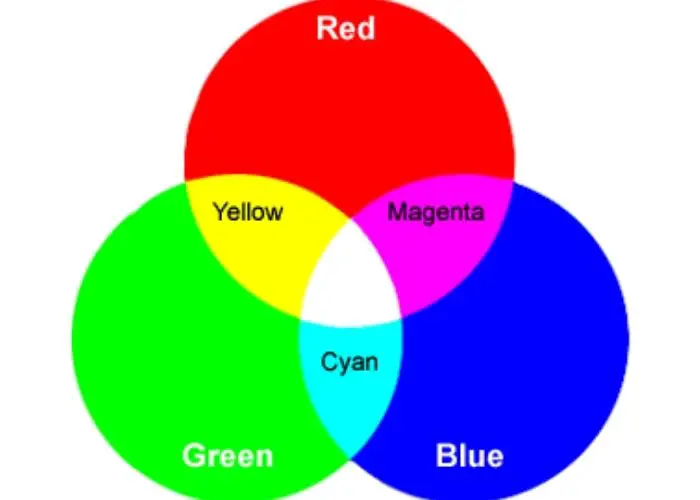
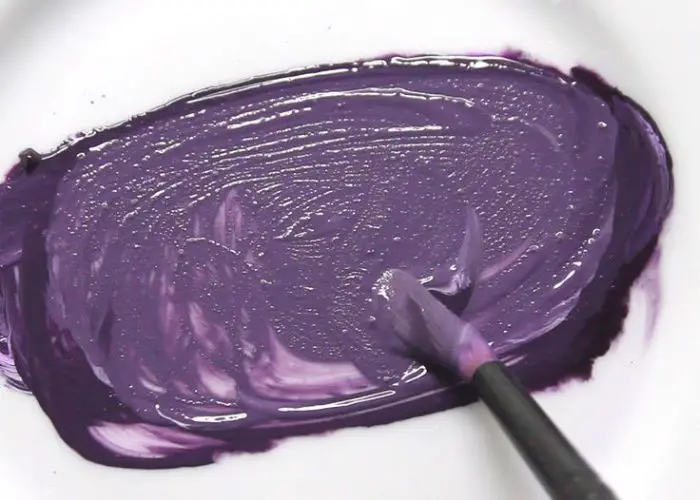
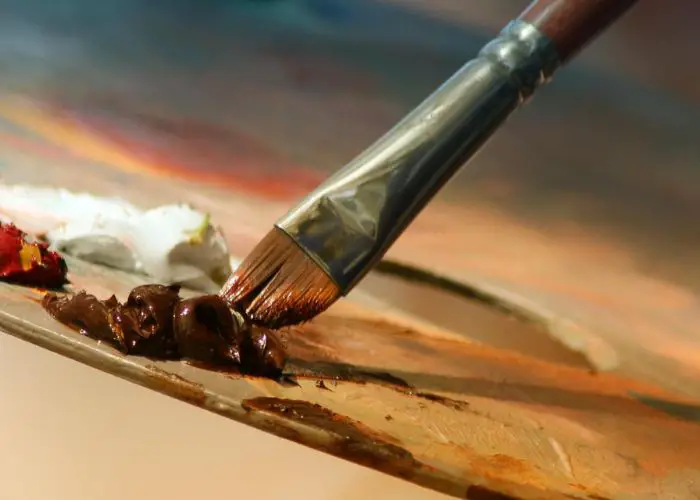
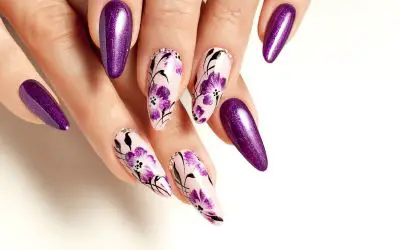



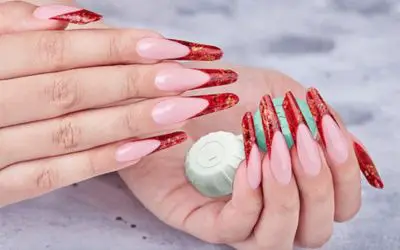
Leave a Reply